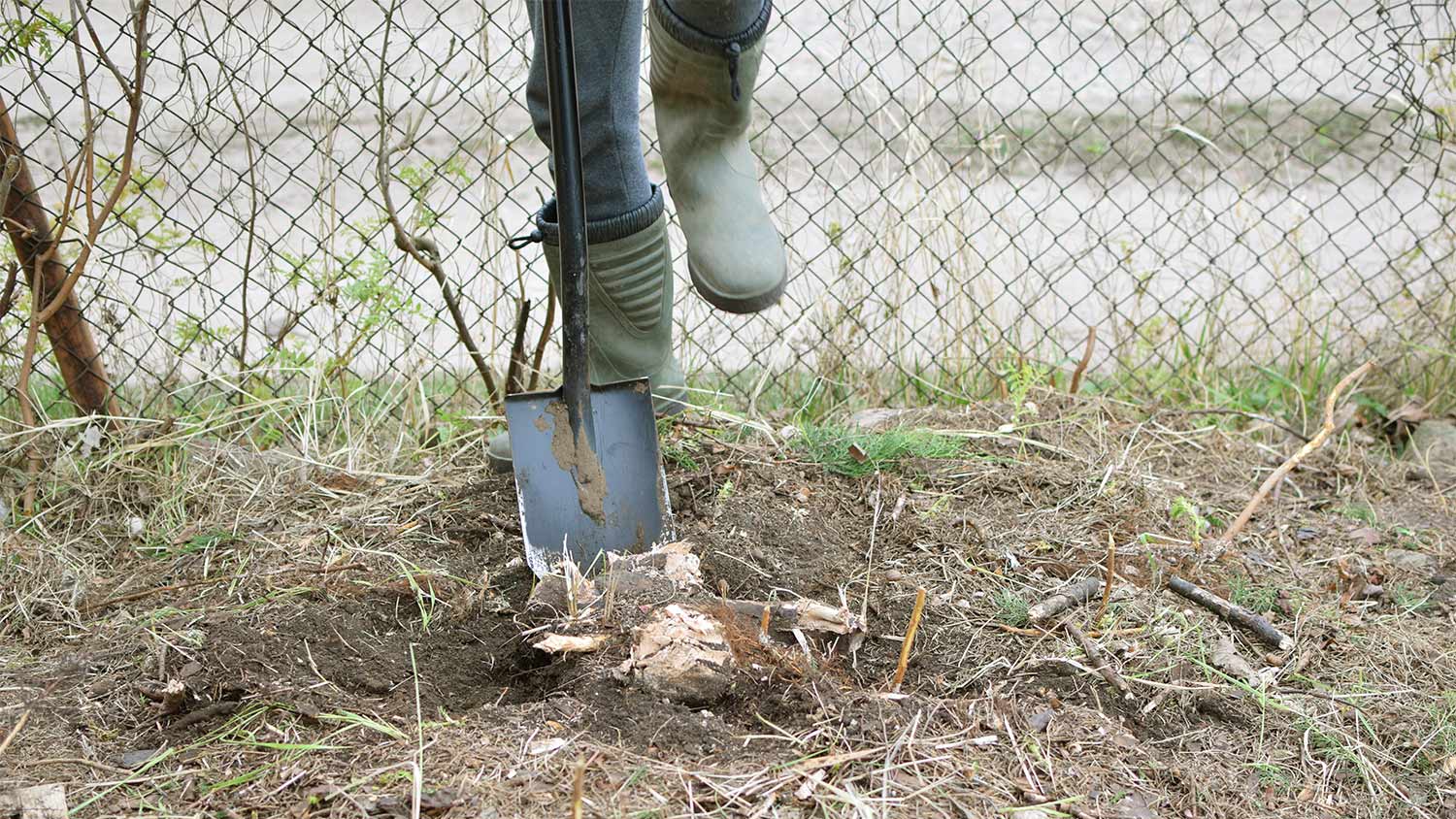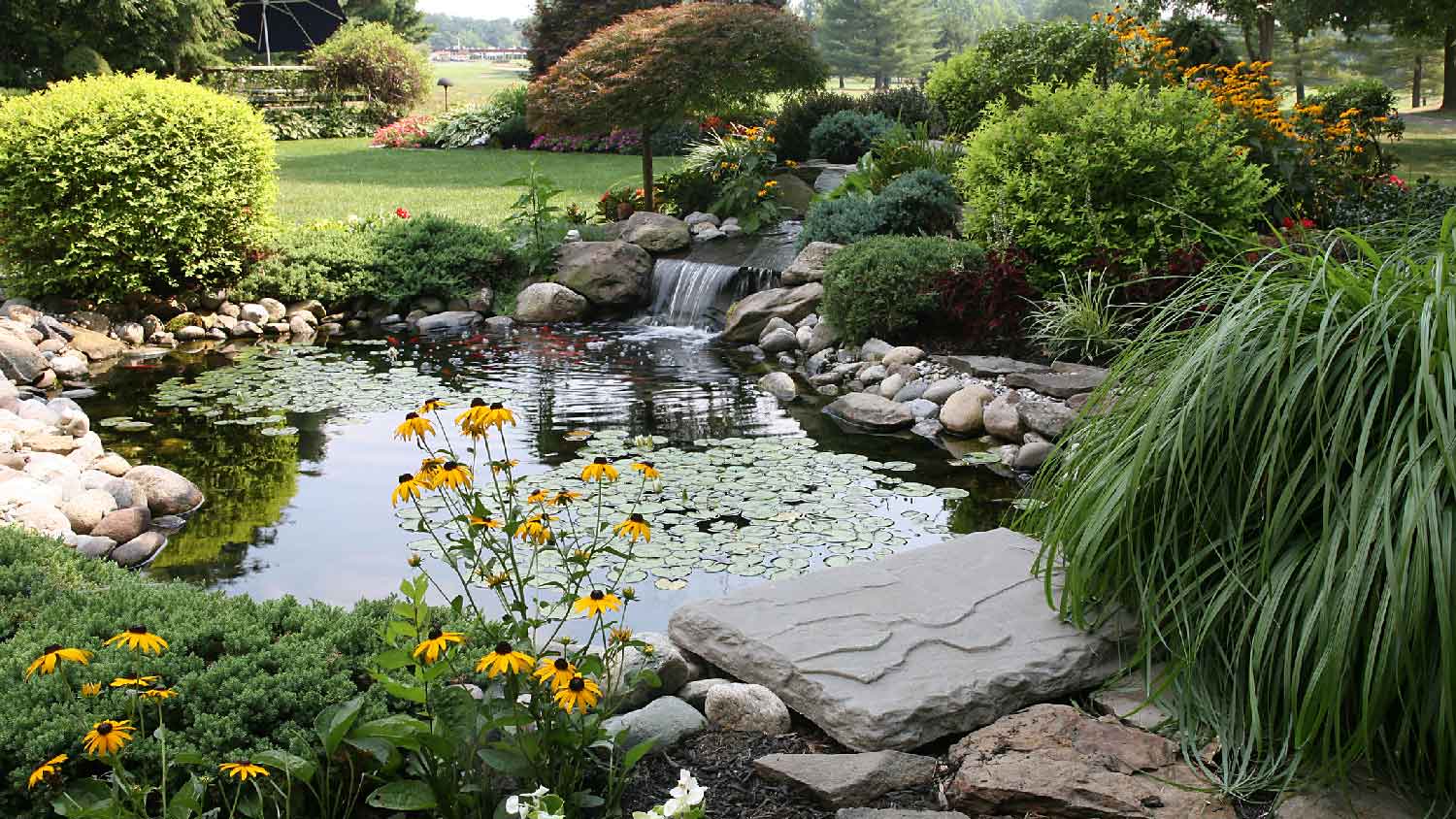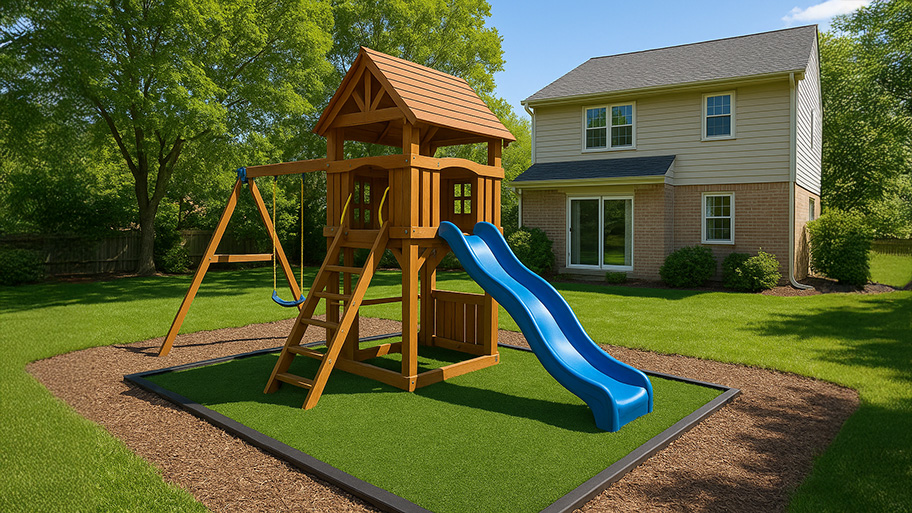
Xeriscape costs depend on materials, the size of your yard, and if you DIY. This guide will help you determine what your xeriscaping project will cost.
Don’t let bushes get in the way of your next landscaping upgrade


Removing bushes yourself is physically demanding work: You’ll need to dig around the root ball, sever roots, and lift stumps.
Large shrubs may require mattocks, saws, and excavation machinery to remove.
Digging incorrectly can harm nearby plants and compact soil.
A shrub removal pro can handle larger jobs much more quickly and will also make sure that holes are filled and debris is hauled away.
It may seem like a daunting process to learn how to remove bushes from your yard, especially if it’s been damaged, killed by drought or cold weather, or it’s in the way of other landscaping tasks. Bushes can develop deep, stubborn roots that make them difficult to take out. Whether you decide to extract your problem shrubbery or enlist the help of a local shrub removal pro, here’s what you need to know about removing bushes.
There are plenty of reasons homeowners choose to get rid of their bushes, from aesthetic upgrades to clearing dead or diseased shrubbery. It’s essential to take out bushes and bush stumps infested with pests or diseases to avoid spreading it to nearby plants. You should also strongly consider removing bushes causing trip hazards in your yard.
On the other hand, you may simply want to clear out bushes to make way for new landscaping or backyard features, such as a greenhouse or extended patio. No matter your motivation: It’s important to remove the bushes from the root to avoid unintentional regrowth in that same spot.

The first thing you should do before digging up shrubs is to dial 811, which is a nationally recognized hotline for checking for buried utilities. You should never dig into your yard without first getting an inspection to avoid the risk of electrical shock or causing a flood or gas leak. You might need to wait a few days, but it’s worth the wait to avoid turning your cost-effective DIY into a very expensive disaster.
You’ll also need to prepare for bush removal by assembling the following tools:
Reciprocating saw, chainsaw, or pruning saw
Bypass loppers
Mattock
Trenching shovel
Tarp
Safety glasses
Face shield
Ear protection
Gloves
Chainsaw chaps
Long sleeved, fitted clothing
Hard hat
Follow these steps to remove bushes seamlessly from your yard.
To be able to work close to the trunk and roots of your bush, it’s a good idea to trim bush branches back to allow access. In addition to making it easier to get at the bush’s roots, trimming off branches with a bypass lopper and a saw will make it safer and easier to move once it’s free from the ground.
Exposing the bush’s roots and giving yourself access to cut and pull its base out will make it much easier to see what you’re doing. Dig into the soil around the base of the trunk and then about a foot or two in diameter around that with your trenching shovel.
Cut through the roots with your mattock by swinging it into the exposed root surface. You can also use your chain saw, pruning saw, and trenching shovel to release the main part of the bush from the surrounding soil. Use extreme caution if you’re using power tools to avoid striking the surrounding pavement or other objects. Don’t start using a saw until it’s in direct contact with the soil or roots.
Once you have a radius around the base of the shrub disconnected from the soil, you will have room to dig in underneath the base. Using your trenching shovel with help from your mattock, cut through the remaining root underneath and free the stump from the soil.
Working from one side of your root ball to the other, work a tarp underneath it so that it’s resting on top of the tarp. If you don’t have a tarp, use a drop cloth for this step. The main point of this step is to give yourself something to grip to help lift the stump out of the hole.
Lift the stump out of the hole using the tarp and one other person for balance. While smaller root balls might be able to roll out, for larger ones, having a way to spread out the weight and create a surface to grip helps tremendously.
Use the topsoil or other materials to fill in the hole left by the root ball of the removed bush. Depending on the bush’s size, you might not use all of the soil. Packing the soil in so that a sinkhole doesn’t develop will help defend against tripping hazards later.
The cost of professional bush removal is $100 per bush or between $450 to $1,375, depending on the number and size of the bushes and other obstacles that landscapers might encounter.
While it’s possible and less expensive to remove bushes on your own, it’s faster and safer to hire a local shrub removal service to do it instead. This is a good project for an enthusiastic DIYer, but if you have serious yard obstacles, very large bushes, or need to remove multiple bushes and their stumps, it’s worth hiring a pro to ensure it’s done correctly.
From average costs to expert advice, get all the answers you need to get your job done.

Xeriscape costs depend on materials, the size of your yard, and if you DIY. This guide will help you determine what your xeriscaping project will cost.

How much do hedges cost? Discover average hedge installation prices, key cost factors, and tips to save money on your landscaping project.

We break down the cost to remove bamboo, which is slightly higher than other forms of tree removal. It's a difficult DIY task because of bamboo's hardy underground roots.

How big is your pond? Knowing how much water your pond can hold will help you choose the right treatments for it and the proper number of aquatic life.

While it’s possible to DIY build a retaining wall, several pros have advanced knowledge of hardscaping and building. Learn who to hire to build a retaining wall.

Artificial grass can enhance your home’s curb appeal with very little upkeep. Learn how to choose the artificial grass that’s right for your yard.